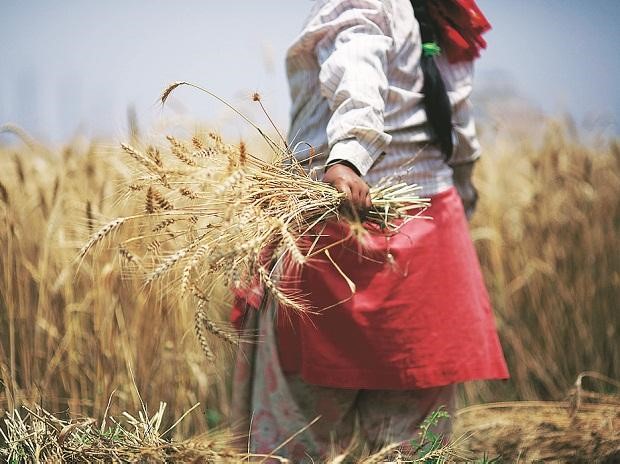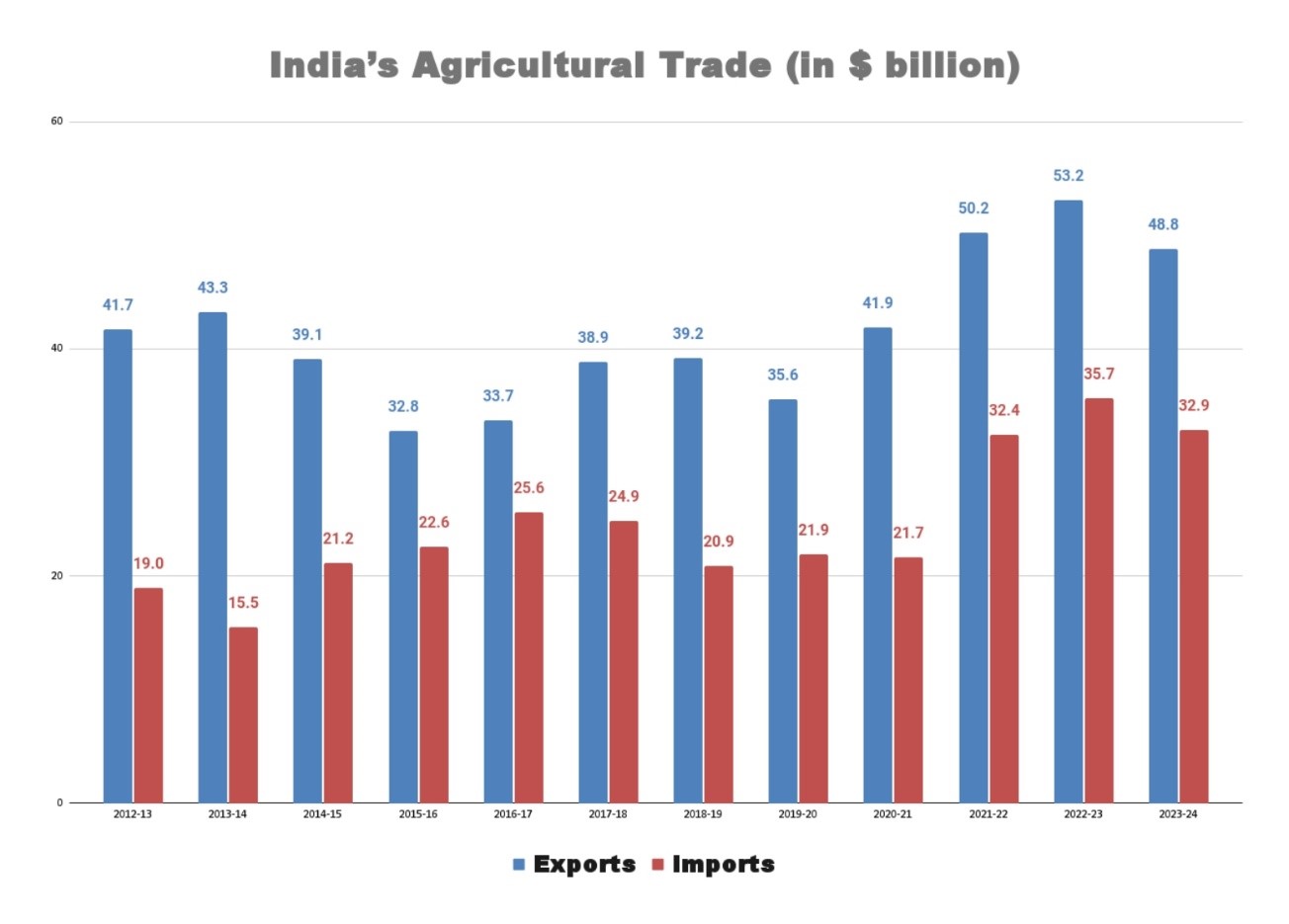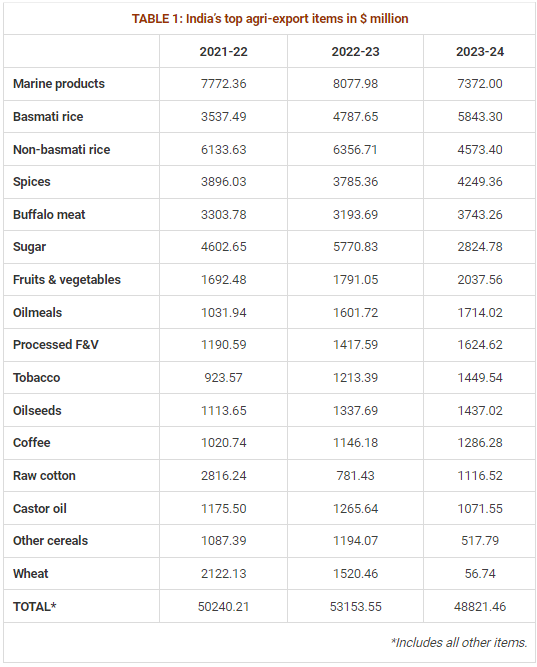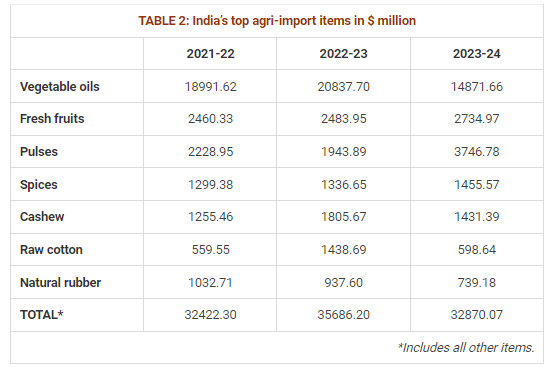Description

Disclaimer: Copyright infringement not intended.
Context
- India’s agricultural exports witnessed a notable decline of 8.2% in the fiscal year concluding on March 31, 2024.
- This downturn can be attributed to restrictive shipment measures imposed on various commodities, spanning cereals, sugar, and onions.

Statistical Data
- The total value of agricultural exports amounted to $48.82 billion during the 2023-24 period.
- This figure represents a decrease from the record high of $53.15 billion recorded in 2022-23, as well as the $50.24 billion recorded in the previous fiscal year, as per data from the Department of Commerce.
Historical Context
- Agricultural exports experienced a downturn, falling from $43.25 billion in 2013-14 to $35.60 billion in 2019-20.
- This decline coincided with a simultaneous increase in imports, rising from $15.53 billion to $21.86 billion over the same period.
Global Commodity Market Dynamics
- The decline in India's agricultural exports was largely influenced by a crash in global agri-commodity prices.
- The UN Food and Agriculture Organization’s (FAO) food price index (base: 2014-16=100) dropped from an average of 119.1 to 96.5 points between 2013-14 and 2019-20.
- Low international prices eroded the cost competitiveness of India's exports while exposing it to heightened vulnerability from imports.
- However, the global price recovery following the Covid-19 pandemic and Russia’s invasion of Ukraine saw a significant upturn.
- The FAO index surged to 140.8 in 2022-23, resulting in India's agricultural exports and imports reaching all-time highs.
- Despite this, exports dropped in the fiscal year just concluded, showcasing the volatile nature of global agricultural markets.
Drivers of Exports
Sugar and Non-Basmati Rice
- Table 1 illustrates that the decline in exports was primarily led by sugar and non-basmati rice.

Sugar Export Restrictions
- The government-imposed restrictions preventing sugar exports during the current production year from October 2023.
- Consequently, sugar exports were valued at only $2.82 billion in 2023-24, significantly lower than the peaks of $5.77 billion and $4.60 billion in previous fiscal years.
Non-Basmati Rice Export Restrictions
- Concerns over domestic availability and food inflation led to a ban on exports of all white non-basmati rice since July 2023.
- Currently, only parboiled grain shipments within the non-basmati segment are permitted, subject to a 20% duty.
- These restrictions caused overall non-basmati exports to decrease from a record high of $6.36 billion in 2022-23 to $4.57 billion in 2023-24.
Wheat and Onion Export Restrictions
- Export restrictions on wheat were implemented in May 2022, resulting in a drastic decline in value to $56.74 million in 2023-24, after reaching an all-time high of $2.12 billion in 2021-22.
- On May 4, just before the third phase of the Lok Sabha polls, the Centre lifted the ban on onion exports. However, a floor price of $550 per tonne and a 40% duty were imposed.
- Despite these measures, onion exports only amounted to 17.08 lakh tonnes ($467.83 million) during April-February 2023-24, compared to 25.25 lakh tonnes ($561.38 million) in the entire fiscal year of 2022-23.
Other Export Items
- Most major agricultural export items, excluding marine products, castor oil, and other cereals (primarily maize), have shown growth.
- Basmati rice exports reached $5.84 billion in 2023-24, surpassing the previous high achieved in 2013-14.
- Spices exports exceeded the $4 billion mark for the first time.
- However, exports of buffalo meat, oil meals, and raw cotton, although increased from the previous fiscal year, remained below their respective historical peaks.
Drivers of Imports
Edible Oils
- Table 2 highlights that the 7.9% decline in overall agricultural imports during 2023-24 was primarily driven by a significant reduction in imports of edible oils.
- In 2022-23, India's imports of vegetable fats exceeded $20 billion, particularly following the Russia-Ukraine war, during which the FAO index and the vegetable oil sub-index averaged 140.8 points and 168.5 points, respectively.
- However, in 2023-24, the average FAO index eased to 121.6 points, and the vegetable oil sub-index to 123.4 points, resulting in lower global prices.
- Consequently, the import bill for vegetable oils decreased to below $15 billion during the last fiscal year.

Pulses
- Despite the reduction in spending on cooking oil imports, the import of pulses nearly doubled to $3.75 billion in 2023-24.
- This marked the highest level since the fiscal years 2015-16 and 2016-17 when imports stood at $3.90 billion and $4.24 billion, respectively.
Policy Takeaways
Stability and Predictability
- Farmers and agricultural traders, akin to all business operators, prioritize policy stability and predictability.
- Sudden bans or restrictions on agricultural exports, even extending to products like de-oiled rice bran, typically favor consumer interests over those of producers.
- Such actions, especially when implemented overnight as seen with wheat exports, can inflict significant damage. Establishing export markets requires time and effort.
- Economists often advocate for a more predictable and rules-based policy framework, suggesting the introduction of temporary tariffs instead of outright bans or quantitative restrictions.
Import Policies
- The Modi government has eliminated or reduced import duties on various pulses and edible oils.
- However, these low or zero tariffs contradict the government's objective of promoting crop diversification, particularly away from water-intensive crops like rice, wheat, and sugarcane.
Future directions
- Post-election, there may be a need for a more rationalized export-import policy.
- This policy should strike a balance between the interests of producers and consumers while aligning with both short-term and long-term goals for the agricultural sector.
|
PRACTICE QUESTION
Q. Discuss the trends and challenges associated with India's export sector, highlighting its significance in the country's economic growth and global competitiveness. What measures should be taken to enhance India's export performance in the context of emerging global trade dynamics?
|
SOURCE: THE INDIAN EXPRESS
















